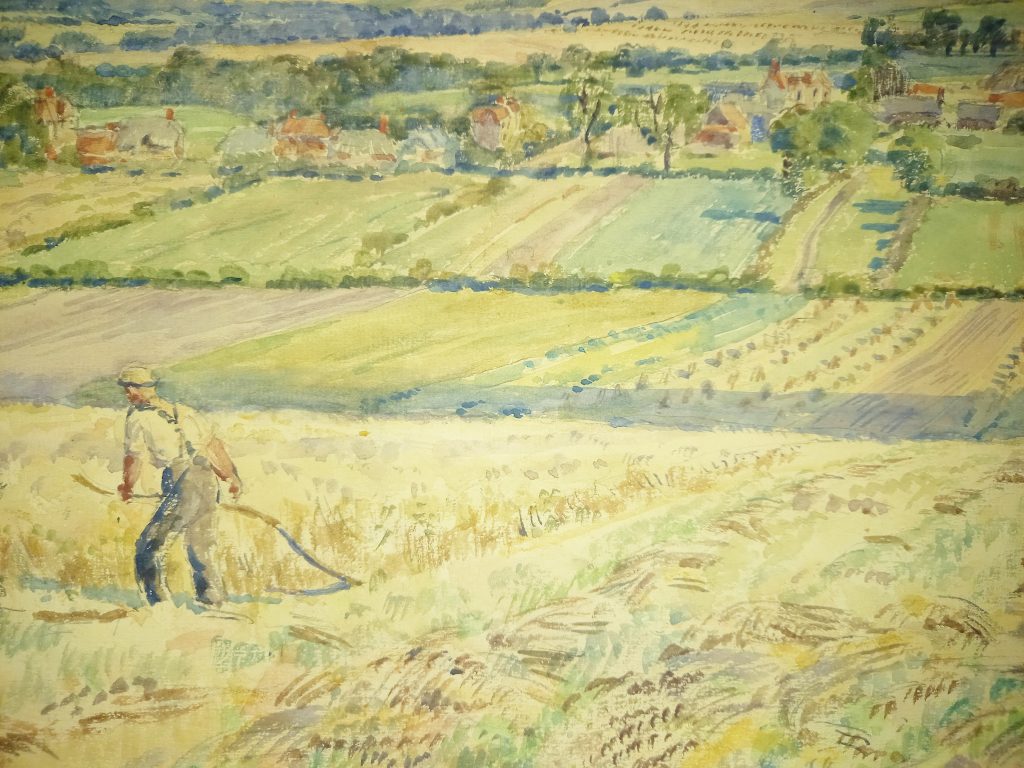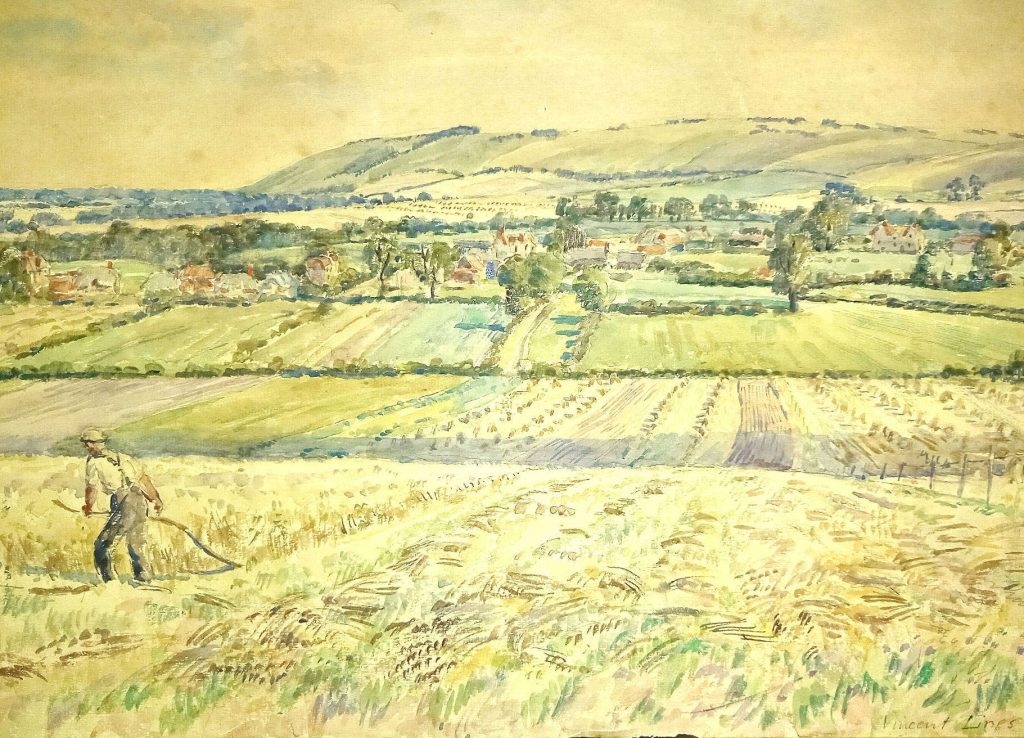
I love discovering interesting artists, the research and uncovering details of their life and then buying works to sell, but before the Covid Lock-down, I bought a painting stolen from the Victoria and Albert Museum, that I have now returned to them.
The painting was a watercolour by Vincent Lines, an artist with an interesting past. Lines education started at the London Central School of Arts and Crafts, then in 1931 he was admitted into the Royal College of Art. He was influenced by A.S. Hartrick and Thomas Hennell, mostly by the latter. He worked as a watercolour artist and an illustrator. He became Principal of Horsham Art School in 1935. He was one of the artists chosen to work on the wartime Recording Britain project, and that is one of the things that attracted me to him.
During the Great Depression in America artists were employed by the state to make works for the public. It was called the Federal Art Project and from 1935 the project was mostly famous for many murals in post offices and public buildings across America, but it also covered sculpture and graphic design work. The project is said to have made 200,000 works from 1935 to 1943.
The director of the National Gallery, Sir Kenneth Clark was inspired by the Federal Art Project in the run-up to the Second World War. In 1940 the Committee for the Employment of Artists in Wartime (part of the British Ministry of Labour and National Service) launched a scheme to employ artists to record the home front, funded by a grant from the Pilgrim Trust. It ran until 1943 and some of the country’s finest watercolour painters, such as John Piper, Rosemary Ellis, Rowland Hilder, and Barbara Jones were commissioned to make paintings and drawings of places which captured a sense of national identity. Their subjects were typically English: market towns, villages, churches, country estates, rural landscapes; industries, rivers, monuments and ruins. They were documenting characteristic scenes in a way never undertaken before.
The picture had its title “Vale of Shalbourne” on the front in pen under the watercolour when auctioned online. The image below from their website.
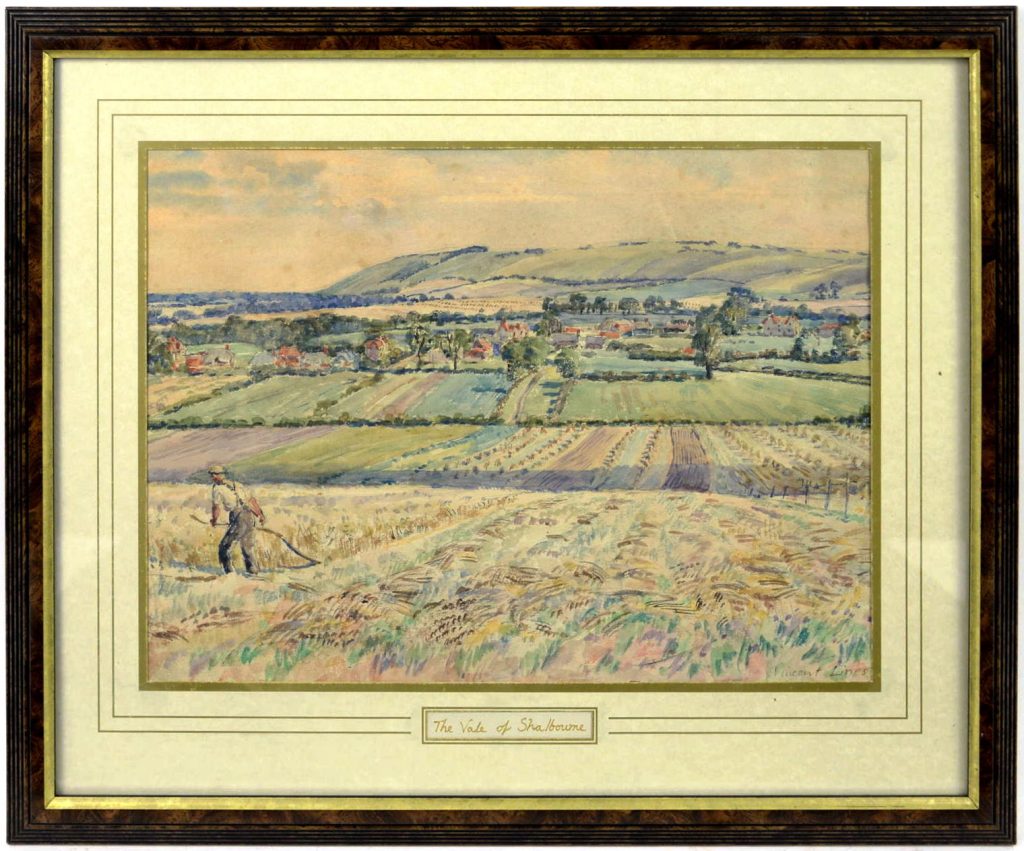
Why didn’t I google the work? Well I knew the artist, his style and there are many works not in the Recording Britain scheme by him, so I wouldn’t think it was stolen. The real question, in retrospect, is why didn’t the auction house list the painting as Vale of Shalbourne by Vincent Lines instead of how they chose to list it:
Vincent Henry LINES (1909-1968) landscape with farm worker signed watercolour
How did I discover my purchase was stolen? I bought the painting at over the internet (not ebay) and had it posted to me, when it arrived the glass was broken, so I took it apart. Unusually it had no tape on the back of the frame and it was in a cheap clip frame giving easy access to the back. On the back of the painting it had the full details, Vincent Lines, and the name “Vale of Shalbourne” and next to it a stamp saying ‘Recording Britain, Scheme, Pilgrim Trust Branch’.
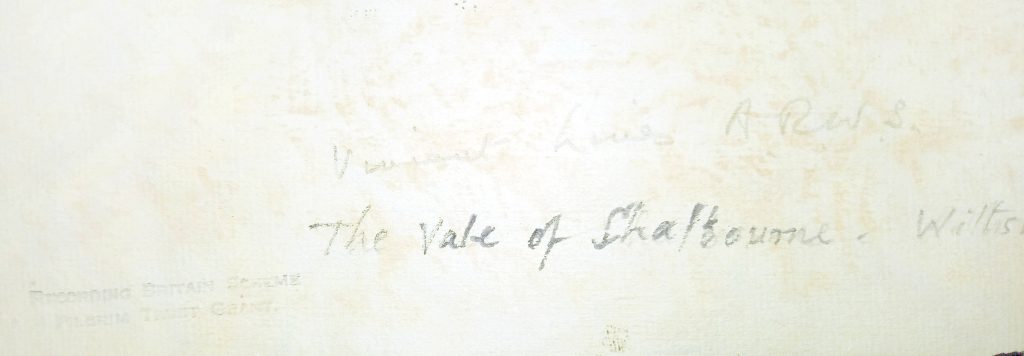
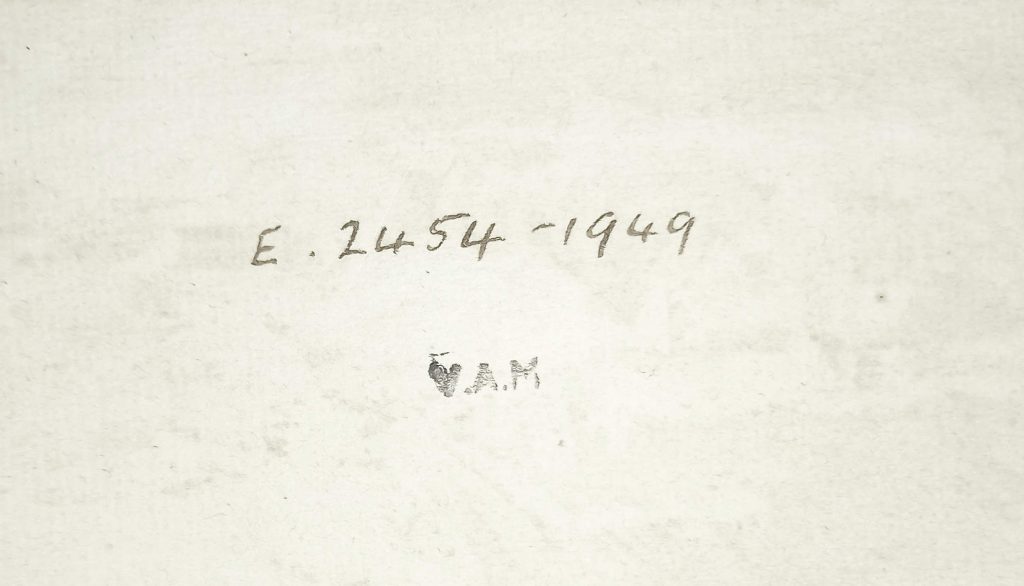
Furthermore, in the picture above, in the centre on the back of the watercolour was the V.A.M. stamp (for Victoria and Albert Museum) and then the allocation number. The code when typed into the V&A website comes up with a listing for “The Vale of Shalbourne” by Vincent Lines, is is listed as “In Storage”. Being stamped, with the code next to it, means it couldn’t have been a rejected work by Lines for the project. The Recording Britain board chose what they bought, leaving more prolific artists some works to sell, but these were not stamped. Though the Pilgrim Trust funded the scheme they gave all the works (over 1500) to the Victoria and Albert Museum to document and keep.
Due to the large number of works created, many works were loaned to regional collections and it is likely this painting was either stolen or wrongly disposed. The normal line of things is for it to hang in someone’s office for years, then it taken home as a retirement present. From the frame the watercolour came in, the style of mount and the amount of dirt on the glass I would say it was framed in the early 1990s. It’s a typical and trivial thing that happens but the V&A said they have been working hard to recover items missing and that people like me do return them when they become awake of the mistake.
This problem happens with many loaned collections, the British Government said it had lost eight works between 1 November 2007 and 31 October 2008; three from the Department for Culture, Media and Sport, including a Julian Trevelyan and John Brunsdon, those were recovered, but five are still lost.
I emailed the V&A, but due to furloughing, it took awhile for a response, but now the lockdown has ended I have returned the painting to them.
Other collectors of Vincent Line’s work were the King, the Government Art Collection, Hertfordshire Pictures for Schools and the Royal Library. Thankfully I legitimately own the Hertfordshire Pictures for Schools painting as they were all sold off when the council wanted to make some money, but that is another story and there is another tale there too.
